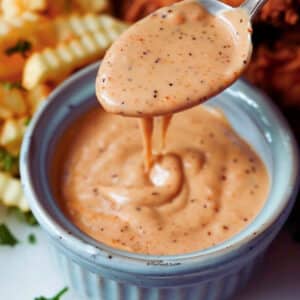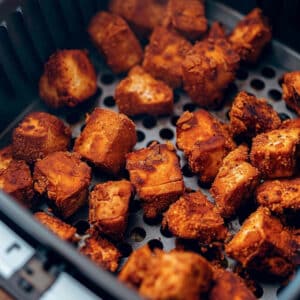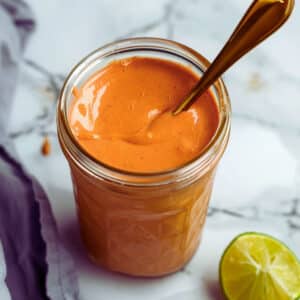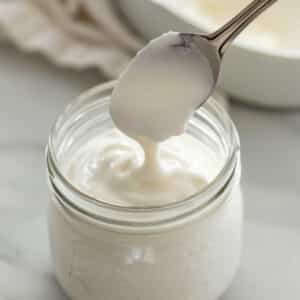Unlock the secrets to juicy, flavorful grilled salmon that will have you hooked! This easy recipe is packed with fresh summer vibes and ready to become your new favorite.
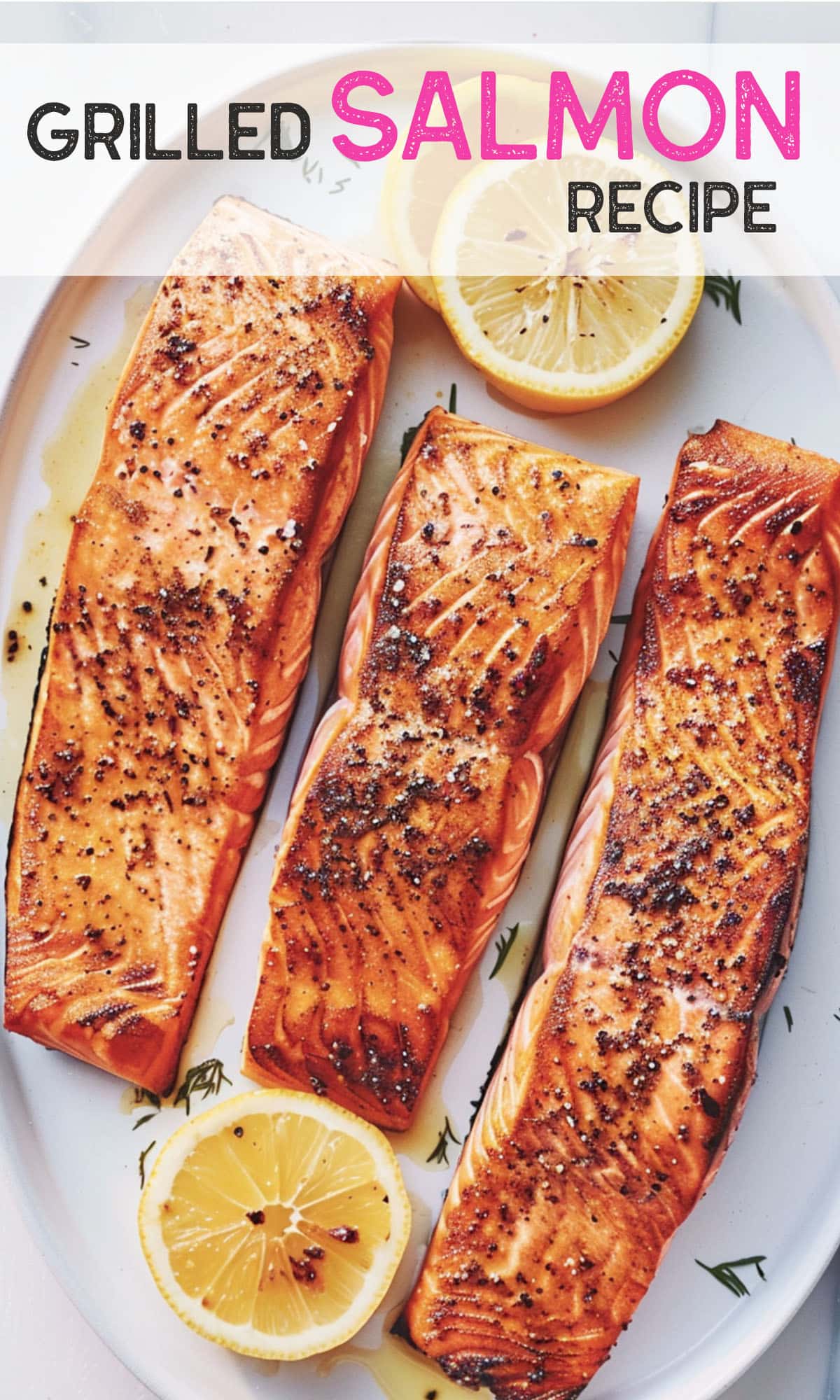
We know you're busy, and that's why we perfected this incredibly simple grilled salmon. Years of experience taught us that the best recipes are often the most effortless. This flavorful, healthy dish comes together in minutes, making it the perfect choice for busy weeknights or relaxed summer dinners.
Choosing the Right Salmon
Selecting the right salmon is the first step to achieving that melt-in-your-mouth grilled experience. Let's break down the key factors to consider:
Wild-Caught vs Farmed
Each type offers unique flavors, textures, and considerations. Wild-caught salmon boasts a richer flavor but can be more expensive. Farmed salmon is widely available, often milder in taste, and generally more affordable. To learn more about the differences between the two, check out this helpful guide.
I love the bold taste of wild-caught salmon. If you prefer a milder flavor, opt for quality farm-raised salmon. Wild-caught salmon have a higher fat content, which creates a richer flavor, while farm-raised options are leaner with a less "fishy" taste.
Best Cut for Grilling
Opt for center-cut fillets or steaks for their uniform thickness and easy cooking. Skin-on options provide a protective barrier and can add flavor, while skinless offers ease of eating.
Signs of Freshness:
Look for salmon with vibrant color, a mild ocean-like smell, and firm, springy flesh. Avoid any signs of discoloration, strong fishy odors, or a mushy texture.
Additional Considerations:
- Sustainability: If possible, choose salmon from responsibly managed fisheries to support healthy ocean ecosystems. Look for certifications that verify sustainable practices.
- Budget: Factor in variations in price between wild-caught, farmed, and different cuts when making your selection.
Ingredients for the Perfect Grilled Salmon
Simplicity is key for this delicious recipe. Here's what you'll need:
- The Star: A Quality Salmon Fillet Choose from rich king, vibrant sockeye, or flavorful coho. Opt for a skin-on fillet for the best grilling experience (more on that later!).
- A Flavorful Base: A high-heat oil like avocado oil or a flavorful extra virgin olive oil.
- The Essential Seasonings: Kosher salt and freshly cracked black pepper to enhance the salmon's natural flavor.
Step by Step Instructions
Prepare the Grill. Fire It Up: Ignite your charcoal and let the coals heat until covered in a layer of gray ash. Arrange them for your desired cooking zones (direct and indirect heat are ideal).
Preheat Like an Oven: Close the grill lid and allow the grates to heat up for at least 10 minutes. This ensures even cooking and helps prevent your salmon from sticking.
The Hand Test (Use Caution!): If you don't have a grill thermometer, hover your hand 3-4 inches above the grate. If you can comfortably hold it there for about 3 seconds, your grill is ready for medium-high heat. Caution: Never touch a hot grate!
Tech It Up: The most reliable method is a grill thermometer. Aim for a temperature of 450°F for perfectly seared salmon.
Fuel for the Fire: 80-100 charcoal briquettes generally provide heat for about an hour of grilling. Monitor your temperature and add more briquettes as needed.

Season the Salmon. Brush the flesh side of the salmon fillets with oil. Season generously with kosher salt and freshly ground black pepper.
Grill skin-side down: Place the salmon fillets skin-side down directly over the heat. Close the grill lid and cook for 6-8 minutes. The salmon should become lighter in color, feel firmer, and release easily from the grill grates when ready to flip.
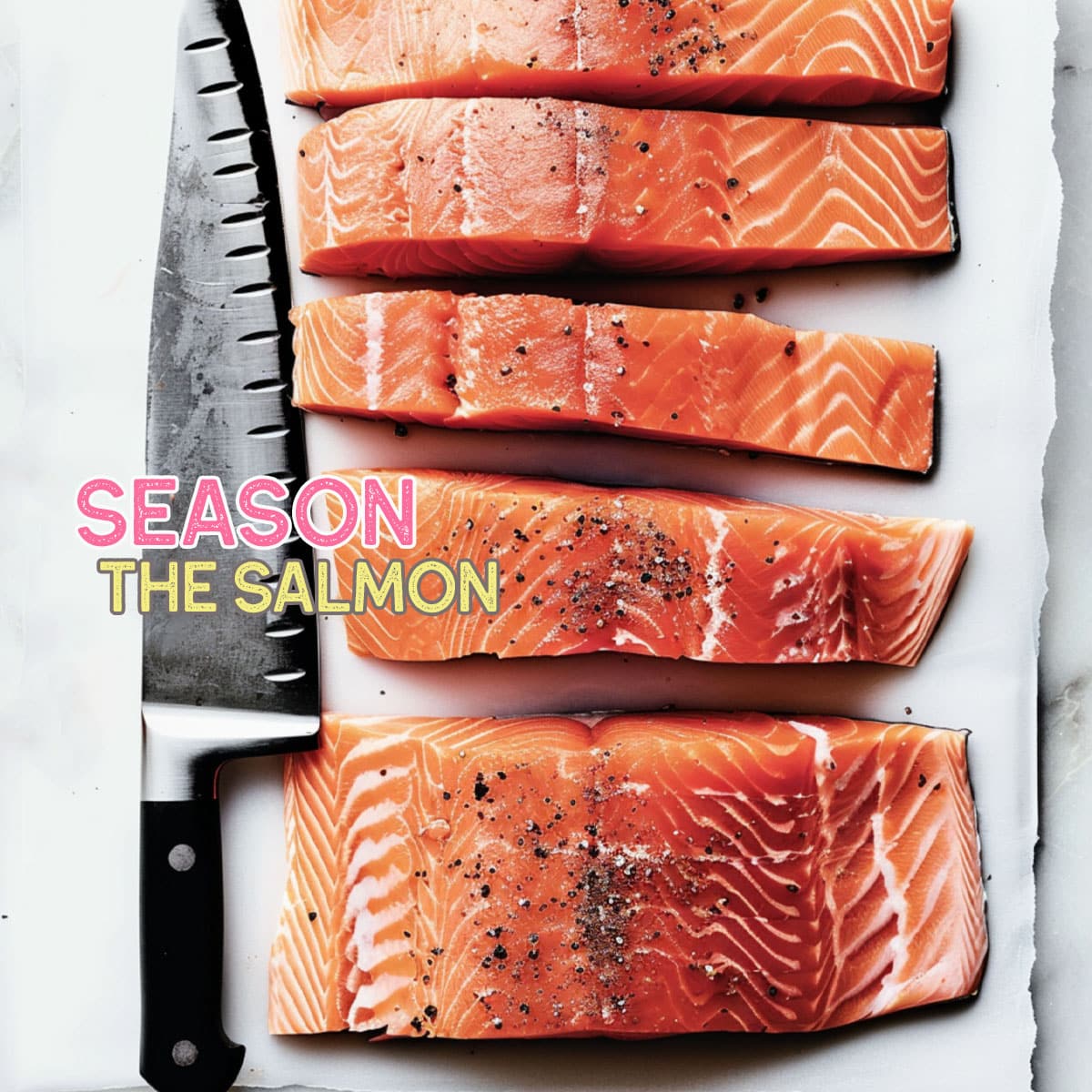
Flip and Finish. Carefully flip the salmon fillets. Close the grill lid and cook for 2-4 minutes until the salmon reaches an internal temperature of 130°F for medium-rare, or cook longer according to your desired doneness.

Rest and Serve. Transfer the grilled salmon to a serving platter. Let rest for 1-2 minutes to allow the juices to redistribute. Slide the salmon skin off the fillets and serve immediately with lemon wedges.

Extra Tips:
- Check your Grill Temps: Make sure your grill is preheated to the correct temperature before adding the fish for optimal results.
- Testing for Doneness: An instant-read thermometer is the most reliable way to determine doneness. Alternatively, you can gently press on the salmon; it should feel firm but still have a slight give for medium-rare.
- Let it Rest: Resting allows the juices to redistribute for a flaky, moist final result.
Techniques for Perfectly Cooked Salmon
Grilling salmon may seem intimidating, but with a few key techniques, you'll be a pro in no time!
- Temperature is Key: Aim for a grill temperature between 450°F-550°F for ideal searing and even cooking. A reliable thermometer is your best friend – internal temperature should reach 125-145°F, depending on your desired level of doneness.
- Prevent Sticking: Super-hot, well-cleaned grates minimize the chance of your delicate fish sticking and tearing. Oiling the salmon itself, rather than the grill, also promotes easy release.
- Direct vs. Indirect Heat: Direct heat offers that beautiful sear, while indirect heat provides gentler cooking for thicker cuts. Learn to utilize both zones on your grill for maximum control and perfect results.
- To Flip or Not to Flip: The golden rule: flip your salmon only once! Start by grilling it skin-side down for most of the cooking time. This helps the fish stay intact, prevents sticking, and gives you that crispy, delicious skin.
- Visual Cues: Even without a thermometer, you can gauge doneness. Look for a color change from translucent to opaque, slightly firm flesh, and juices starting to appear on the surface.
Pro Tips:
- Clean and Oiled Grates: Essential for preventing sticking! Thoroughly clean your grill grates and apply a light coat of high-heat oil before adding the salmon.
- Room Temperature: Allow your salmon to rest at room temperature for 15-20 minutes before grilling for even cooking.
Grilled Salmon Timing and Temperature
- The Great Release: Your salmon will initially stick to the grates, but don't panic! After 6-8 minutes, the skin crisps up and the fish will release naturally. That's your cue to flip it for a final 1-2 minutes of browning.
- Temp Check: The ideal internal temperature for grilled salmon is 145°F. However, aim to pull your salmon off the grill slightly earlier, around 125°-130°F. Carryover cooking will bring it to that perfect 145°F as it rests.
- Signs of Doneness: Even without a thermometer, you can tell if your salmon is cooked. Look for opaque flesh that flakes easily with a fork.
Pro Tips:
- Resting is Key: A few minutes of resting allows the juices to redistribute, ensuring a flaky, melt-in-your-mouth texture.
- Invest in a Thermometer: A meat thermometer takes the guesswork out of grilling and guarantees perfectly cooked salmon every time.
Troubleshooting Your Grilled Salmon
1 Dry, Overcooked Salmon
- Cause: Grilling for too long or at too high of a temperature.
- Solutions:
- Use a thermometer to ensure an internal temperature of 125-145°F (depending on desired doneness).
- Consider indirect grilling methods for a more gentle cooking process.
- Brine or marinate the salmon for added moisture.
- Rest the salmon briefly before serving to allow juices to redistribute.
2 Salmon Sticking to the Grill
- Causes: Grill grates not clean or oiled, salmon not at room temperature, flipping the fish too early.
- Solutions:
- Thoroughly clean and oil your grill grates before grilling.
- Allow salmon to come to room temperature for 15-20 minutes prior to grilling.
- Avoid flipping the salmon too early; wait until it naturally releases from the grill.
- If skin is on, start with the skin-side down for easier release.
3 Uneven Cooking
- Causes: Inconsistent heat from your grill, varying thicknesses of the salmon fillet.
- Solutions:
- Ensure even heat distribution across your grill. Practice managing hot and cool zones.
- Select salmon pieces that are similar in thickness.
- Consider using a grill basket for smaller pieces and more even heat exposure.
4 Bland Flavor
- Causes: Under-seasoning, lack of bold flavors.
- Solutions:
- Utilize flavorful marinades, rubs, or glazes. Experiment with different flavor profiles.
- Don't be afraid of salt and pepper; they are essential!
- Add fresh herbs and aromatics for another layer of flavor.
Pro Tips and Tricks
Ready to take your grilled salmon to the next level? Master these tips and tricks:
- The Importance of Rest: Let your grilled salmon rest for 5-10 minutes before serving. This allows the juices to redistribute, resulting in a flakier, more tender final product.
- Beyond Dinner: Leftover grilled salmon is incredibly versatile! Flake it into salads, top your morning toast, or whip up a quick salmon dip for snacking.
- Make it Saucy: A drizzle of flavorful sauce can transform your grilled salmon. Try a classic herbed butter, a tangy yogurt-dill sauce, or a vibrant chimichurri for a burst of freshness
- Skin-On or Skin-Off? Grilling with the skin on helps prevent sticking and adds flavor. For easy serving, remove the skin after grilling. Skin-off options allow for direct marinating and even seasoning.
- Spice It Up: Don't be afraid to experiment with different spice rubs or marinades. Cajun spices add a kick, a lemon-herb blend keeps it classic, and a teriyaki glaze offers sweet-savory goodness.
Extra Tips:
- Get Creative with Toppings: Top your grilled salmon with browned crumbs (like the Furikake Salmon recipe) chopped nuts, fresh herbs, a dollop of pesto, or a sprinkle of capers for added texture and flavor.
- Embrace the Grill: Utilize your grill for side dishes too! Grilled vegetables or a simple grilled corn salad complete your summery meal.
Side Dishes that Complement Grilled Salmon
Grilled salmon's rich flavor and adaptable nature make it an excellent canvas for delicious side dishes. Here are a few ideas to inspire your next meal:
Light and Refreshing
- Light and Refreshing:
- Simple Green Salad: A crisp salad with a vibrant vinaigrette balances the richness of the salmon.
- Cucumber Salad: Thinly sliced cucumbers, fresh dill, and a tangy dressing offer a cool counterpoint.
- Grilled Asparagus: A drizzle of lemon and sprinkle of Parmesan enhances the natural sweetness of asparagus.
- Caprese Salad: Ripe tomatoes, creamy mozzarella, fresh basil, and a balsamic glaze create a classic flavor combination.
Hearty and Comforting
- Hearty and Comforting:
- Roasted Potatoes: Crispy on the outside, tender on the inside – customize with your favorite herbs and spices.
- Pork Belly Fried Rice: This recipe breaks down how to make pork belly fried rice, a savory dish featuring crispy pork belly, fluffy rice, and flavorful vegetables. It emphasizes using the right cut of pork and day-old rice for the best texture.
- Creamy Polenta: A comforting base for your salmon, perfect for soaking up those delicious juices.
- Grilled or Roasted Vegetables: Zucchini, bell peppers, onions...the grill adds another layer of smoky flavor.
Flavor Adventures
- Flavor Adventures:
- Mango Salsa: A burst of sweetness and spice compliments the salmon beautifully.
- Quinoa Salad with Lemon-Herb Vinaigrette: Light, fluffy quinoa with fresh herbs and a zesty dressing.
- Roasted Brussels Sprouts with Balsamic Glaze: The glaze adds a sweet tang, perfect with the savory salmon.
- Watermelon Salad with Feta: A surprising combination that's refreshing and delicious.
Full Recipe
Grilled Salmon Recipe
Pin RecipeEquipments:
- Grill
Ingredients:
- 4 salmon steaks or fillets (7 oz skin-on)
- 2 tablespoon avocado oil (or extra virgin olive oil)
- 2½ teaspoon Kosher salt
- 2½ teaspoon ground black pepper
- 2 pieces lemons (cut into wedges)
Instructions:
Prepare the grill:
- Fire It Up: Ignite your charcoal and let the coals heat until covered in a layer of gray ash. Arrange them for your desired cooking zones (direct and indirect heat are ideal).
- Preheat Like an Oven: Close the grill lid and allow the grates to heat up for at least 10 minutes. This ensures even cooking and helps prevent your salmon from sticking.
- The Hand Test (Use Caution!): If you don't have a grill thermometer, hover your hand 3-4 inches above the grate. If you can comfortably hold it there for about 3 seconds, your grill is ready for medium-high heat. Caution: Never touch a hot grate!
- Tech It Up: The most reliable method is a grill thermometer. Aim for a temperature of 450°F for perfectly seared salmon.
Season the Salmon:
- Season the salmon: Brush the flesh side of the salmon fillets with oil. Season generously with kosher salt and freshly ground black pepper.
- Grill skin-side down: Place the salmon fillets skin-side down directly over the heat. Close the grill lid and cook for 6-8 minutes. The salmon should become lighter in color, feel firmer, and release easily from the grill grates when ready to flip.
Flip and Finish:
- Carefully flip the salmon fillets. Close the grill lid and cook for 2-4 minutes until the salmon reaches an internal temperature of 130°F for medium-rare, or cook longer according to your desired doneness.
Rest and Serve:
- Transfer the grilled salmon to a serving platter. Let rest for 1-2 minutes to allow the juices to redistribute. Slide the salmon skin off the fillets and serve immediately with lemon wedges.
Notes:
Techniques for perfectly cooked salmon
Grilling salmon may seem intimidating, but with a few key techniques, you'll be a pro in no time!- Temperature is Key: Aim for a grill temperature between 450°F-550°F for ideal searing and even cooking. A reliable thermometer is your best friend – internal temperature should reach 125-145°F, depending on your desired level of doneness.
- Prevent Sticking: Super-hot, well-cleaned grates minimize the chance of your delicate fish sticking and tearing. Oiling the salmon itself, rather than the grill, also promotes easy release.
- Direct vs. Indirect Heat: Direct heat offers that beautiful sear, while indirect heat provides gentler cooking for thicker cuts. Learn to utilize both zones on your grill for maximum control and perfect results.
- To Flip or Not to Flip: The golden rule: flip your salmon only once! Start by grilling it skin-side down for most of the cooking time. This helps the fish stay intact, prevents sticking, and gives you that crispy, delicious skin.
- Visual Cues: Even without a thermometer, you can gauge doneness. Look for a color change from translucent to opaque, slightly firm flesh, and juices starting to appear on the surface.
Grilled salmon timing and temperature
- The Great Release: Your salmon will initially stick to the grates, but don't panic! After 6-8 minutes, the skin crisps up and the fish will release naturally. That's your cue to flip it for a final 1-2 minutes of browning.
- Temp Check: The ideal internal temperature for grilled salmon is 145°F. However, aim to pull your salmon off the grill slightly earlier, around 125°-130°F. Carryover cooking will bring it to that perfect 145°F as it rests.
- Signs of Doneness: Even without a thermometer, you can tell if your salmon is cooked. Look for opaque flesh that flakes easily with a fork.
Nutrition Information:
Please note that all nutrition information are just estimates. Values will vary among brands, so we encourage you to calculate these on your own for most accurate results.






